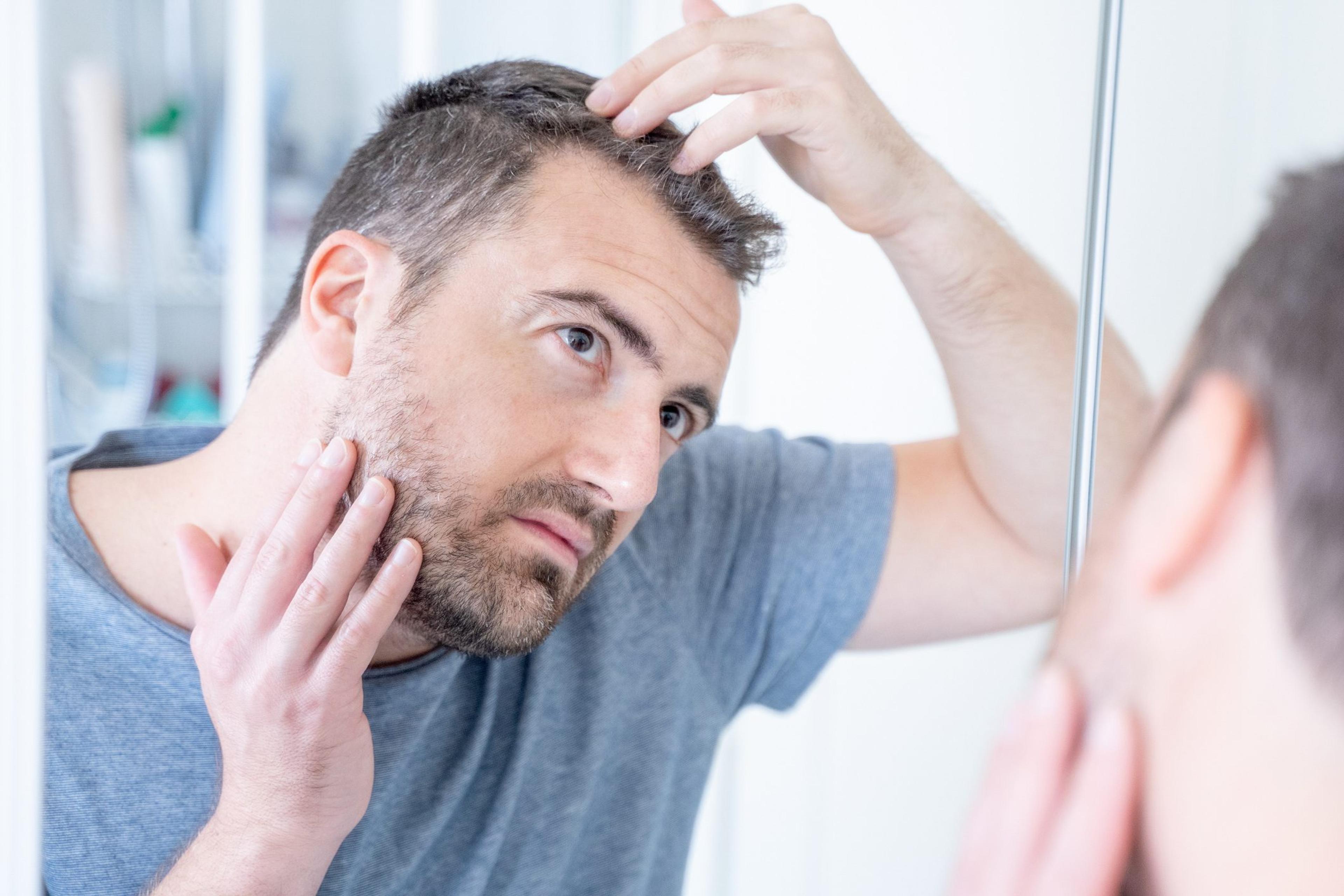What is Psoriasis of the Scalp and How is it Treated?
Jake Newby
| 3 min read

Psoriasis is a chronic, noncontagious skin disease that can cause itching, redness and flaking to the body parts it affects. The inflammatory condition most commonly affects the knees, elbows, trunk, and scalp, but between 45 and 56% of people living with psoriasis have scalp psoriasis, according to the National Psoriasis Foundation.
What does scalp psoriasis look like?
Scalp psoriasis can affect the hairline, forehead, back of the neck and skin around the ears. When it’s mild, it may be unnoticeable. When it’s severe, the person dealing with the condition may appear to have fine, silver scaling that looks like dandruff. Or it appears as thick, red, crusted plaques that covers the entire scalp. Psoriasis may resemble other skin disorders like seborrheic dermatitis. However, scalp psoriasis has more of a powdery appearance with a silvery shininess, while seborrheic dermatitis can appear yellowish and greasy. Signs and symptoms of scalp psoriasis include:
- Burning sensation or soreness
- Dandruff-like flaking
- Dry scalp that may crack and bleed
- Mild to intense itching
- Red patches on the scalp that are sometimes thick and inflamed
- Temporary hair loss
What causes scalp psoriasis?
The cause of scalp psoriasis is the same every time. When it occurs, it’s because a person’s immune system malfunctioned and told skin cells to grow too quickly. The new skin cells then form in a matter of days. The body does not shed these excess skin cells, so they pile up on the surface of the skin and cause patches of psoriasis to appear. This ultimately leads to redness and flaking of the scalp.
Treatment methods for scalp psoriasis
Many people see a dermatologist for treatment. Scalp psoriasis can be tricky to treat because everyone responds differently to different treatments. Several methods of treatment have been recognized in the medical community. Over-the-counter (OTC) products: The two active ingredients people with scalp psoriasis should look for in OTC products are salicylic acid and either coal or wood tar. Coal tar products are available as creams, gels, and ointments, as well as foams, soaps and shampoos. According to the U.S. Food and Drug Administration, coal tar concentrations between 0.5% and 5% are considered safe and effective for mild forms of psoriasis. Salicylic acid is a peeling agent that is also available OTC. It is intended to soften scales and make them easier to remove. Salicylic acid products can also be prescribed as shampoos and soaps. Medicated shampoos is another treatment methods your doctor may recommend. The National Psoriasis Foundation Seal of Recognition highlights and recognizes OTC products that have been created or intended to be non-irritating and safe for people living with psoriasis. Click here to view products approved by the NPF. Topical treatments: Your doctor may prescribe lotions, solutions, or sprays for treatment if your case of psoriasis is moderate to severe. Follow your doctor’s advice for all medications, including how to apply and how long you should use particularly strong steroids. If you are a Blue Cross Blue Shield of Michigan member and have any questions about your pharmacy benefit coverage, please check your online member account at bcbsm.com or through the mobile app for more information about your plan. Photo credit: Getty Images Keep reading:





